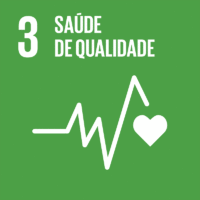Ciência_Iscte
Publicações
Descrição Detalhada da Publicação
Título Revista
Sensors
Ano (publicação definitiva)
2021
Língua
Inglês
País
Suíça
Mais Informação
Web of Science®
Scopus
Google Scholar
Esta publicação não está indexada no Overton
Abstract/Resumo
Human motion analysis provides useful information for the diagnosis and recovery assessment of people suffering from pathologies, such as those affecting the way of walking, i.e., gait. With recent developments in deep learning, state-of-the-art performance can now be achieved using a single 2D-RGB-camera-based gait analysis system, offering an objective assessment of gait-related pathologies. Such systems provide a valuable complement/alternative to the current standard practice of subjective assessment. Most 2D-RGB-camera-based gait analysis approaches rely on compact gait representations, such as the gait energy image, which summarize the characteristics of a walking sequence into one single image. However, such compact representations do not
fully capture the temporal information and dependencies between successive gait movements. This limitation is addressed by proposing a spatiotemporal deep learning approach that uses a selection of key frames to represent a gait cycle. Convolutional and recurrent deep neural networks were combined, processing each gait cycle as a collection of silhouette key frames, allowing the system to learn temporal patterns among the spatial features extracted at individual time instants. Trained with gait sequences from the GAIT-IT dataset, the proposed system is able to improve gait pathology classification accuracy, outperforming state-of-the-art solutions and achieving improved generalization on cross-dataset tests.
Agradecimentos/Acknowledgements
This work was partly funded by FCT/MCTES under the project UIDB/50008/2020.
Palavras-chave
Gait analysis,Gait pathology classification,Deep learning,Computer vision
Classificação Fields of Science and Technology
- Ciências da Computação e da Informação - Ciências Naturais
- Engenharia Eletrotécnica, Eletrónica e Informática - Engenharia e Tecnologia
Registos de financiamentos
| Referência de financiamento | Entidade Financiadora |
|---|---|
| UIDB/50008/2020 | Fundação para Ciência e Tecnologia |
Contribuições para os Objetivos do Desenvolvimento Sustentável das Nações Unidas
Com o objetivo de aumentar a investigação direcionada para o cumprimento dos Objetivos do Desenvolvimento Sustentável para 2030 das Nações Unidas, é disponibilizada no Ciência_Iscte a possibilidade de associação, quando aplicável, dos artigos científicos aos Objetivos do Desenvolvimento Sustentável. Estes são os Objetivos do Desenvolvimento Sustentável identificados pelo(s) autor(es) para esta publicação. Para uma informação detalhada dos Objetivos do Desenvolvimento Sustentável, clique aqui.

 English
English



